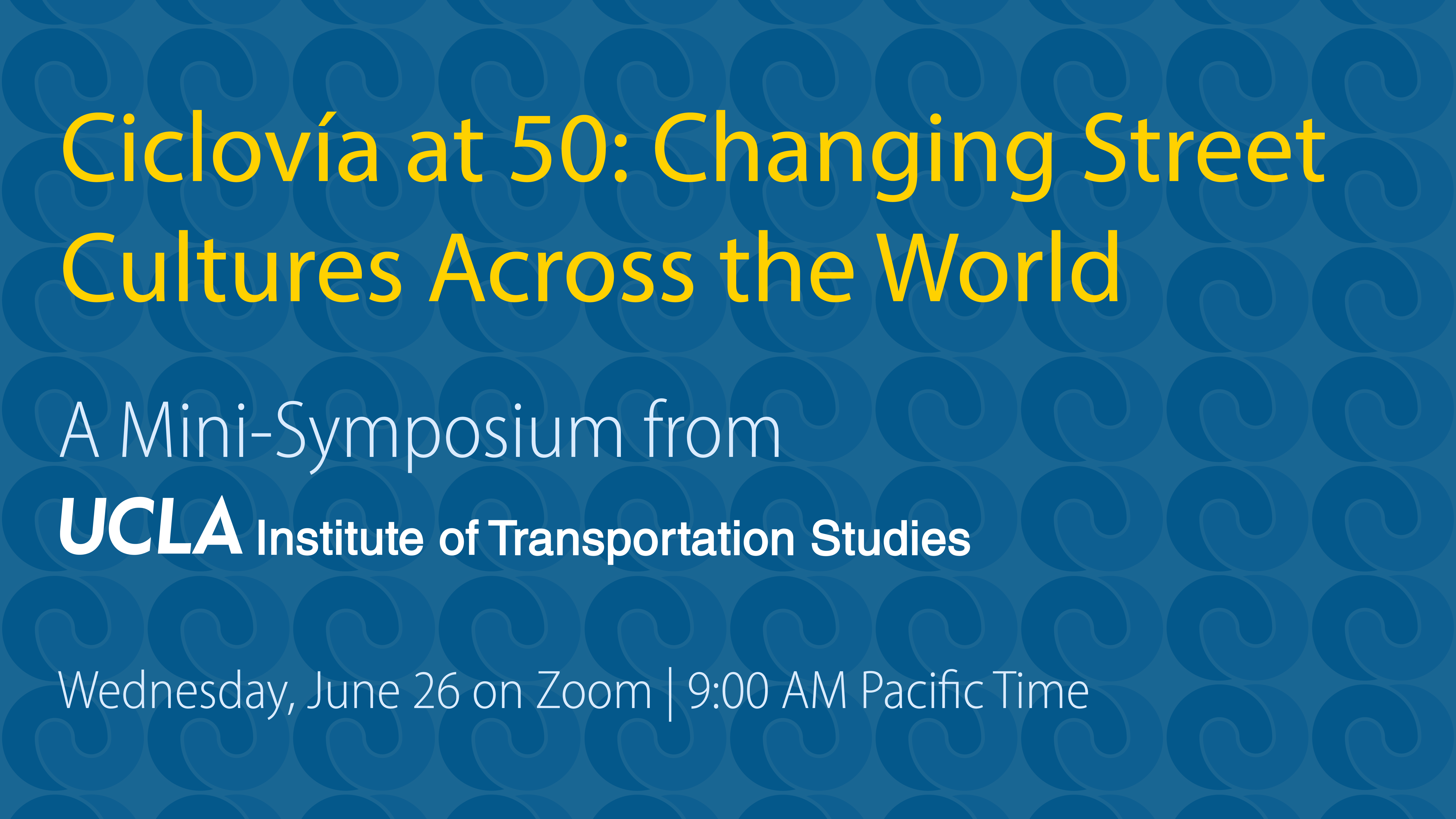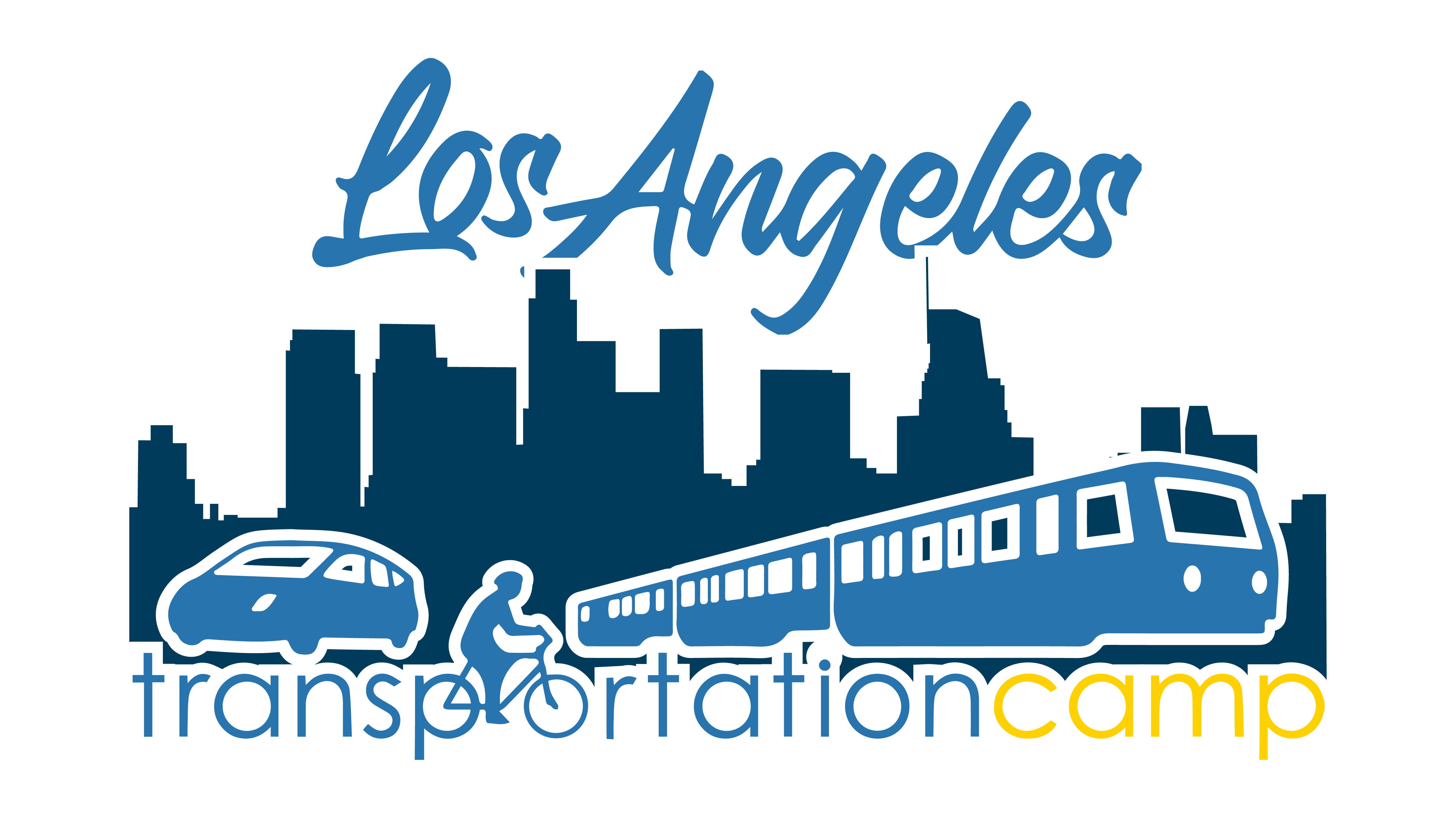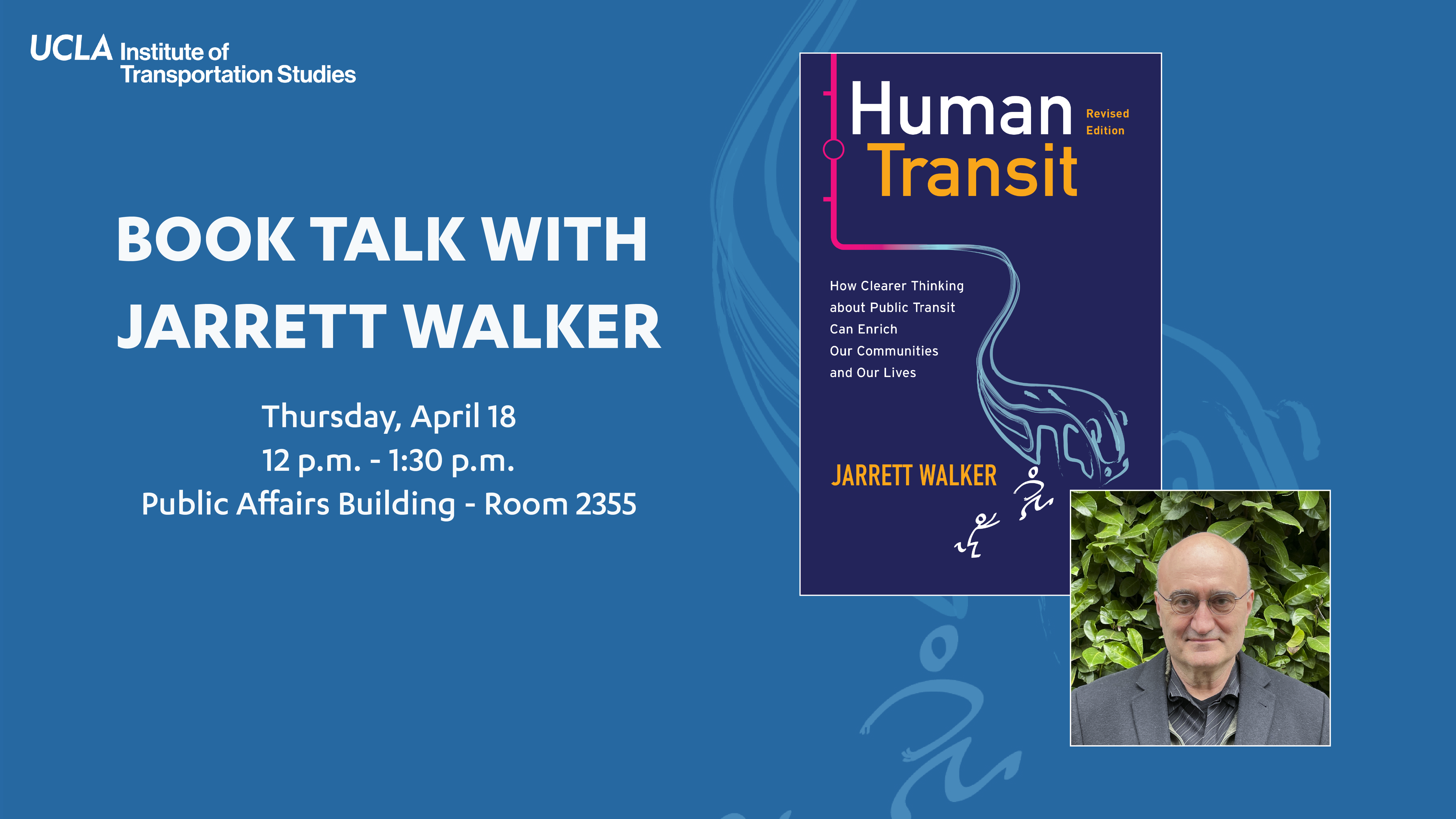Ciclovía at 50: Changing Street Cultures Across the World
A Mini-Symposium from UCLA Institute of Transportation Studies December 2024 marks the 50th anniversary of the ciclovía in Bogotá, Colombia, the original “open streets” event. Ciclovías close streets to cars and open them to people-powered mobility, creating what co-founder Jaime Ortíz Mariño calls the “world’s largest outdoor classroom.” The ciclovía covers over 75 miles every Sunday in Bogotá, and has spread to over 450 cities around the world. In this online event, we will hear from organizers in different cities about what the model has meant for their street cultures. Scholars will share their research on the event and its participants. Experts from the fields of public health and transportation will talk about the challenges and opportunities in funding non-infrastructure programming like this. Explore what cities around the globe have learned from the model, its role as a catalyst in changing street cultures in particular cities, and how ciclovías can help shift people to sustainable transportation. Session 1: Ciclovía Legacies In the first half of the mini-symposium, we'll focus on telling the story. A moderated discussion with ciclovía creators will reflect on the goals of open streets models and how ciclovías have changed transportation culture in specific cities. Following this, [...]




